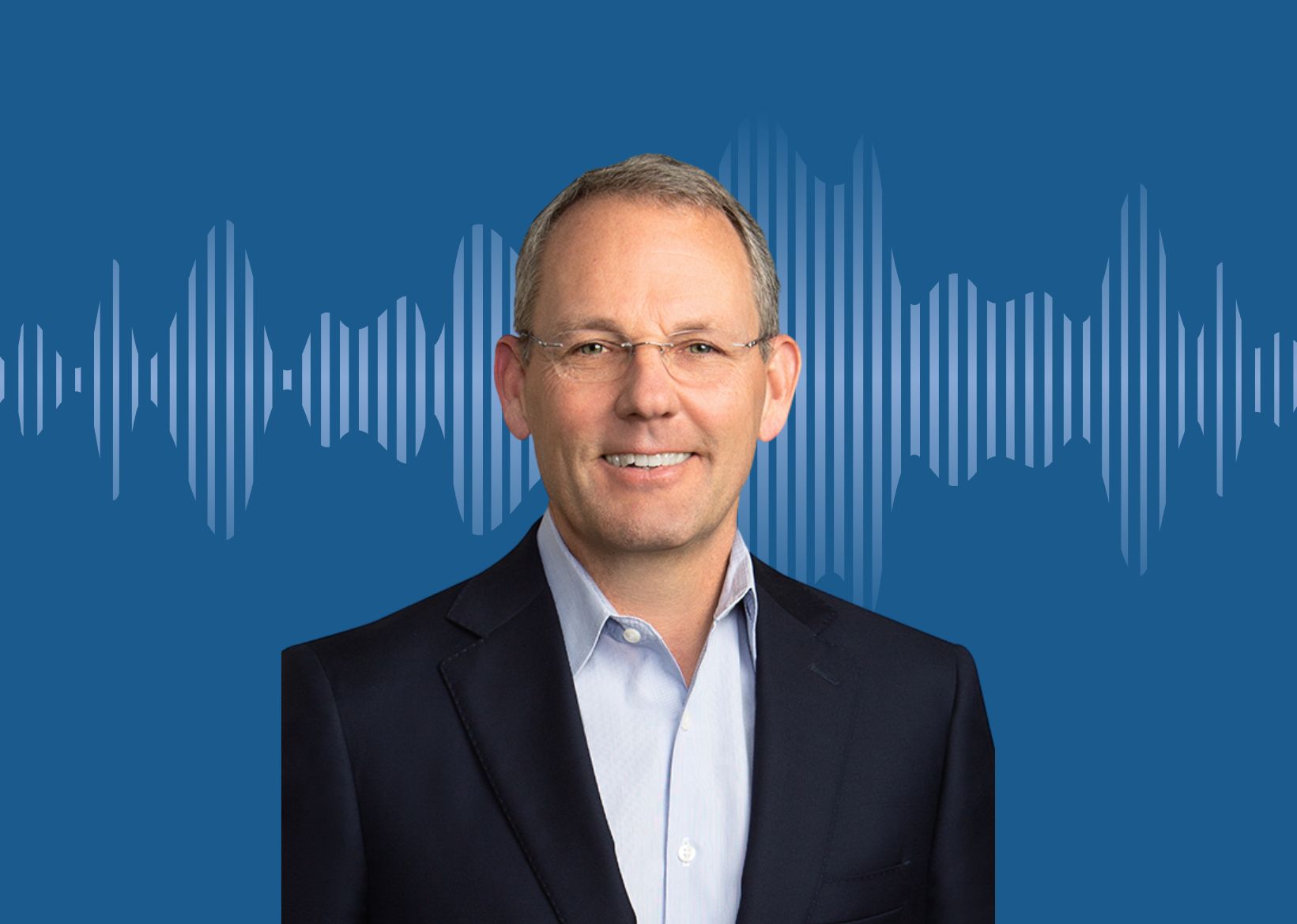Chris Wallis, CEO and CIO at Vaughan Nelson, joins the podcast and breaks down the recent positive economic data, higher than expected inflation, and how he is thinking about small cap vs. large cap as an investor.
February 15, 2024
Lightly edited transcript
Dan: Welcome to the Vaughan Nelson podcast. With me today is CEO and CIO, Chris Wallis. Welcome, Chris.
Chris Wallis: It’s great to be here, Dan.
Dan: All right, Chris, good to have you back. Start on a bit of positive note here. So we saw that some economic data really continues to surprise to the upside. We saw ISM Manufacturing new orders. They showed expansion in the most recent release. So the question here to start off today, are you still expecting some economic weakness as we head into the second quarter?
Chris Wallis: Yeah, I still think we’re going to see the economic slowdown. We’ll see real growth running sub 1% in Q2, and we’re going to see inflation remain sticky at the 3% level. So we’ll still have nominal GDP of 3 to 4%. And as we’ve said all along, that’s going to be it. And then we’re going to start to see a reacceleration specifically out of the industrial side of the economy. But the services side of the economy is really difficult to move into a recessionary condition. So on a lag basis, I’m sure it’s going to experience an uplift as well. And I think when we get into Q3, Q4, we could see 7% nominal GDP growth, which is kind of 3% real and kind of 3 to 4% inflation. And that’s assuming they don’t cut rates. If they cut rates, we could be running even hotter than that as we exit the year.
Dan: And talking about rates and inflation. So we saw most recent CPI that showed higher inflation than anyone had expected. And you’ve mentioned a couple of times in some prior podcasts that inflation, we thought it would begin to firm up and then that would probably be followed by a potential rise as we exit the fourth quarter. Do you think there’s sufficient justification at this point for the markets to continue pricing in rate cuts?
Chris Wallis: It’s interesting. If you look at the inflation data and you look at the strength in the economy, certainly in the fourth quarter coming into January and then what we think it’s going to be in second and third quarter, there’s really no need for dramatic rate cuts. It doesn’t mean that the Fed doesn’t want to cut rates. I think they do and for very different reasons in the strength of the economy. But the market’s cut rates. The market’s already lowered the three-year rate, the five-year rate, the 10-year rate, the 30- year rate. So I think the Fed is going to look for justification to cut rates to let’s say 4, 4.5%. And by doing so, we’ll have a much flatter curve.
But look, we’re well advanced in our sovereign debt crisis, right? So the Fed and the Treasury are working together. They really do need to lower the cost and maintain the liquidity for the US Treasury. And I think that’s more of the impetus for wanting an excuse for rate cuts. They just need to be careful that they don’t reaccelerate or run the economy too hot because clearly the US Treasury is going to pump a lot of liquidity into the economy and accelerate the economic activity and probably even the stock market as we head into the election.
Dan: So if I’m hearing what you’re saying, it sounds like we still have some post near-term softness here. In that in mind, the May to June environment, that sounds like should be supportive for risk assets at least through year-end or at the very least through the November elections. But beyond 2024, do you think that the macro environment could be supportive for risk assets or is just too early to look out that far?
Chris Wallis: Look, I think as you think about what risk assets need and specifically equities to do well, you need a very strong liquidity environment. The two elephants in the room are the fact that the US is well down the path of its sovereign debt crisis and it is reliant on liquidity coming from the Fed and the Treasury because the Treasury will start doing US Treasury buybacks in order to maintain a functioning Treasury market where Treasuries trade like cash and where they can issue at rates that are below nominal GDP growth. So I don’t think there’s anything that’s going to change dollar liquidity except where we get bouts of volatility or in the case of the Fed and the Treasury running the economy too hot going into the election.
The other elephant that’s in the room is China’s in a debt deflation, and China desperately needs to devalue their currency and they can’t do it. They would love to see the US cut interest rates in order to give them some room to provide additional liquidity to their economy. And I don’t think the BOJ is in any different position, nor is Europe. So I think the liquidity environment is going to remain very supportive for risk assets for the foreseeable future, even beyond ’24, although there’s going to be bumps in the roads because of the fiscal dominance and because of the largesse of US deficits in the crowding out that it’ll present.
I think the real risk to risk assets beyond the election is going to be if we run the economy too hot and we reaccelerate inflationary conditions, it is not out of the realm of possibilities, I’m not saying it’s in the base case, but if we do that, we could see inflation start to run well north of 4%. We could see GDP running, nominal GDP running, call it 8%, maybe getting to 9 depending on how much fiscal spending and deficits we run through. And we are going to have a recovery on the industrial side. And that scenario, that may force the Fed to raise rates dramatically higher than we were before. You may see a 200, 250 basis point increase in rates. And that will create a real issue for risk assets writ large. So they’re definitely trying to thread the needle.
So far, with the decisions they made, maybe they’ll be successful. We’ll just have to stand back and watch. But I do think it’s going to present a lot of opportunities in the market because it’s going to create distinct winners and losers as we traverse over the next several quarters.
Dan: One more question for you today. I’m going to shift over a bit toward market specifics. So anecdotally, we’re seeing a real increased interest in small-caps. Do you think this is a situation where the valuation gap is between large-caps and small-caps? It’s become so significant that it’s forcing investors to look outside large. And maybe I’ll just caveat that with saying I wrote that question on Monday morning and all of a sudden small-caps are down 4.5% on Tuesday.
Chris Wallis: Yeah. So look, there’s no question people are overexposed to large and large-cap tech and that can make individuals want to diversify away. And with the strong performance in the fourth quarter by small-caps, that creates the narrative for some performance chasing. And as I said, we’re going to have a cyclical recovery. We’re getting towards the end of the economic slowdown in the industrial side, and we’re still early in a liquidity cycle that began in late ’22 and it’s going to last several years. So all of those would present a positive backdrop for small-caps over time.
Now, let’s separate out what’s really happened. Large-caps have dramatically outperformed small-cap indices. Not necessarily an actively managed small-cap strategy. And that’s because REITs and financials have been a drag for a good portion of the last six to eight quarters. But the real telling is just look at the earnings being reported where you’re seeing S&P earnings up mid-single digits and you’re seeing Russell 2000 earnings down 35, 40% year-over-year.
And at the end of the day, what we’re going to find is it’s less market-cap oriented and it’s more what are your underlying fundamentals? And so I remain in the camp that indices, a diversified index, which the S&P 500 is no longer a diversified index, but a diversified index is going to struggle because inevitably we are going to go through periods of accelerating and decelerating inflation. We still have a large refi window in front of us that starts to pick up a little bit in ’24, but gets more difficult in ’25 and ’26. And because of fiscal dominance and because of the shift in the inflationary regime, it just means we’re still a little bit out of balance.
So I don’t think you can make a statement that larges are going to outperform smalls or smalls going to outperform large. It’s going to be company and sector specific from here.
Dan: All right, good. Well, that’s a good place to wrap, so thank you Chris, and we’ll catch you on here soon.
Chris Wallis: Sounds good Dan.
Dan: The views, information, and/or opinions expressed during this podcast are solely those of the individuals involved and do not necessarily represent those of Vaughan Nelson and its employees.
Vaughan Nelson does not verify and assumes no responsibility for the accuracy of any of the information contained in the podcast. The primary purpose of the information, opinions, and thoughts presented in this podcast is to educate and inform. This podcast or any podcast in the series does not constitute professional investment advice or services, and any reliance on the information provided is done at your own risk. Past performance is not an indication of future performance.
By accessing this podcast, you acknowledge that the entire contents of this podcast are the property of Vaughan Nelson or used by Vaughan Nelson with permission and are protected under US copyright and trademark laws. Securities discussed within this podcast may be held in the Vaughan Nelson strategies.
Also find us on
This information is provided for general information purposes only and does not take into account the investment objectives, financial situation or needs of any person. Investors Mutual Limited (AFSL 229988) is the issuer and responsible entity of the Vaughan Nelson Global Equity SMID Fund and the Vaughan Nelson Global Equity SMID Fund (Quoted Managed Fund) (‘Funds’). Vaughan Nelson Investment Management, L.P. is the investment manager.
This information should not be relied upon in determining whether to invest in the Funds and is not a recommendation to buy, sell or hold any financial product, security or other instrument. In deciding whether to acquire or continue to hold an investment in the Funds, an investor should consider the current Product Disclosure Statement and Target Market Determination for the appropriate class of the Fund, available on the website www.VaughanNelson.com.au or by contacting us on 1300 219 207.
Stay up to date
with Vaughan Nelson
Register to receive regular performance updates and regular insights from the Vaughan Nelson investment team, featured in the Natixis Investment Managers Expert Collective newsletter.
Vaughan Nelson Investment Management marketing in Australia is distributed by Natixis Investment Managers, a related entity. Your subscriber details are being collected on behalf of Vaughan Nelson Investment Management, and Investors Mutual Limited (the RE for Fund) by Natixis Investment Managers Australia. Please refer to our Privacy Policy. Natixis Investment Managers Australia Pty Limited (ABN 60 088 786 289) (AFSL No. 246830) is authorised to provide financial services to wholesale clients and to provide only general financial product advice to retail clients.



